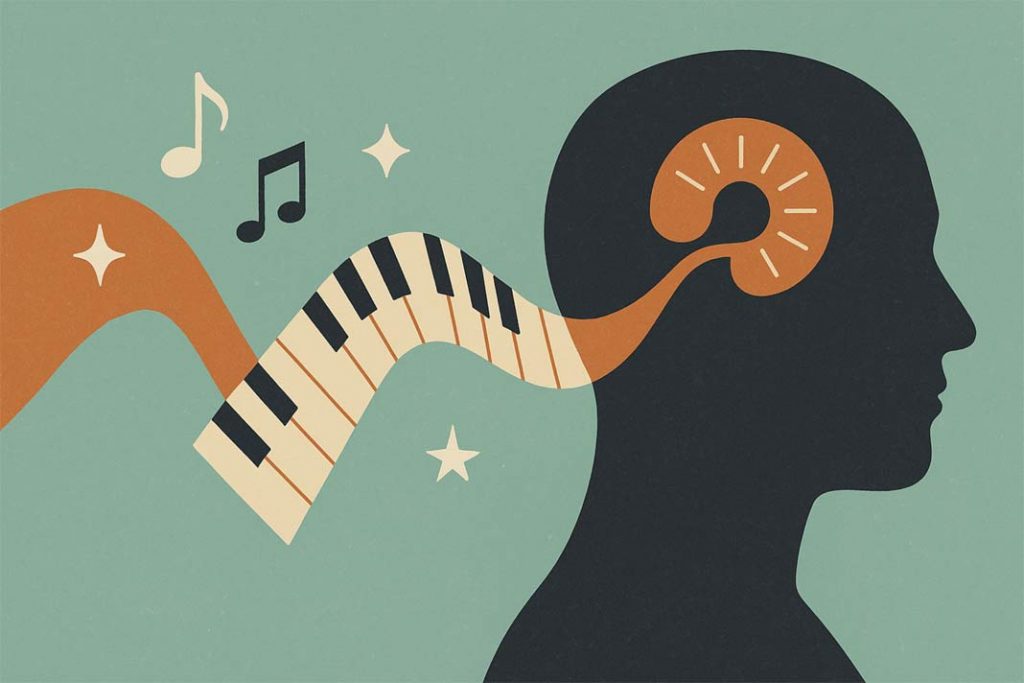Why Some People Don’t Get Chills From Music (And Why That Matters for Learning)
Most of us have had that moment where a song hits just right — goosebumps, lump in the throat, the works. That’s your brain’s reward system saying, “this is good — remember it.” But here’s the twist: a small group of perfectly healthy people don’t get pleasure from music at all. They can hear it, recognise the tune, tap along — emotionally, nothing. Scientists call this specific musical anhedonia.
The myth of “we all love music”
For years, reward was treated like a single dimmer switch: low on one reward, low on all rewards. Not true. Reward sensitivity is multidimensional. You might love food, socialising or games, yet feel flat about music. In other words, different kinds of rewards can have different settings for different people.
The “musical anhedonia” brain
In people with musical anhedonia, the auditory system and the brain’s reward network (nucleus accumbens, orbitofrontal cortex and friends) don’t connect efficiently when listening to music. The ears work. The reward system works for other things. But the bridge between sound and reward is weak for music. That’s why some folks don’t get chills even though everything else checks out.
Why this matters for practice and learning
Reward isn’t just about feeling good. It powers motivation, memory and habit. When practice feels rewarding, your brain tags it as worth repeating. Studies also link higher music-reward sensitivity with better memory for melodies, lyrics and even the context where you heard them. Translation: if you enjoy what you’re playing, you learn faster and remember more.
How to strengthen your music–reward loop
1) Start with music you actually like
Technique matters, but grinding through pieces you dislike won’t train the reward pathway. Build skill using songs that make you want to sit at the piano.
2) Balance predictability and surprise
Your brain loves patterns that are occasionally broken. Try a suspended chord before a resolution, a reharmonised chorus, or a rhythmic twist — that tension-and-release is where the chills live.
3) Play moods, not just notes
Lean into dynamics, pedalling and timing. Emotional intensity flags the moment as important, which boosts reward and memory.
4) Make wins visible
Record short takes, note tempos, tick off microskills. Small, frequent proof of progress keeps the motivation circuit engaged.
5) Rotate challenges
Novelty wakes up the system. Alternate between harmony work, groove practice and a “just for fun” song. Same goal, fresh route.
For the curious
Researchers use tools like the Barcelona Music Reward Questionnaire to chart how people differ across five angles of music reward: seeking, emotion, mood regulation, sensorimotor joy and social reward. People low across these areas may still enjoy other rewards — which shows how specific the music–reward bridge can be.
How Pianoforall Can Help Strengthen Your Reward Loop
One of the strengths of Pianoforall is that it gets you making music you actually enjoy, right from the start.
Because the course teaches chords, rhythms, and styles that sound good immediately, your brain starts associating piano practice with pleasure early on.
That’s crucial for building a strong music–reward link.
Instead of slogging through years of dry exercises before you can play something recognisable, you’ll be accompanying songs, improvising, and experimenting with sounds you love within days.
Those small wins add up, keeping your motivation high and helping your brain lock in what you’ve learned.
If you’ve ever struggled to stick with lessons before, this could be the missing piece — making your practice time something you actually look forward to.
New to the keys? Follow this step-by-step piano lessons online roadmap.
Bottom line
Reward is not a single switch — it’s a set of connections. Strengthen the connection between what you hear and how your brain rewards it, and practice stops feeling like duty and starts feeling like momentum. That’s when the real learning kicks in.



